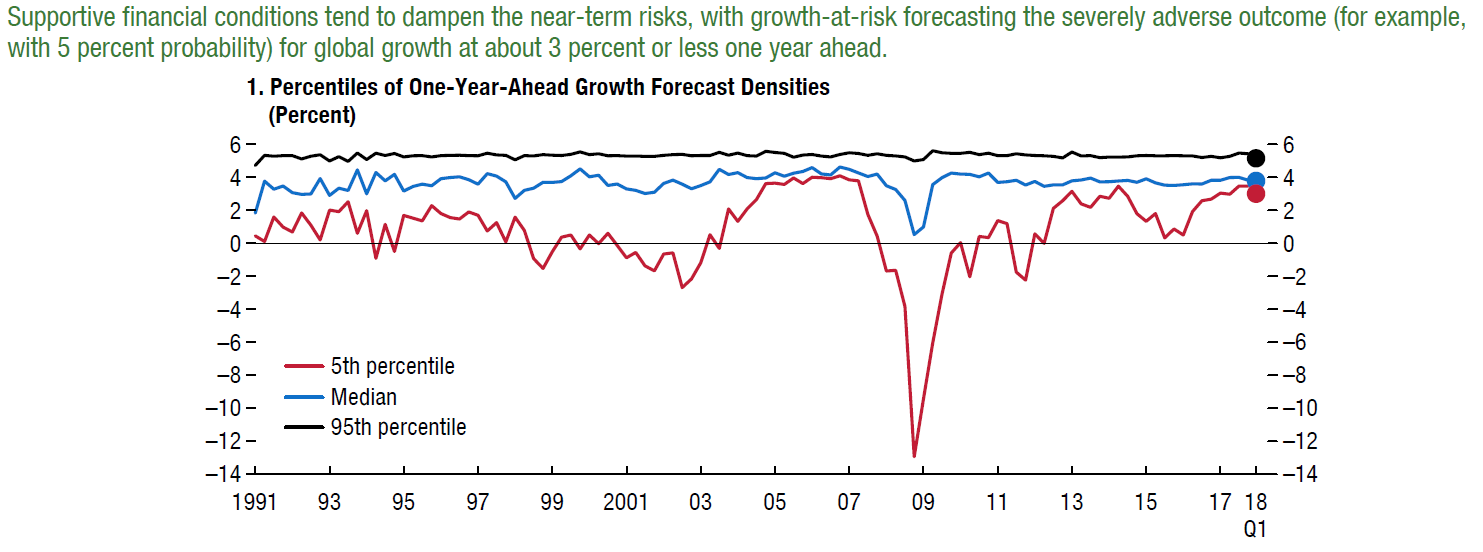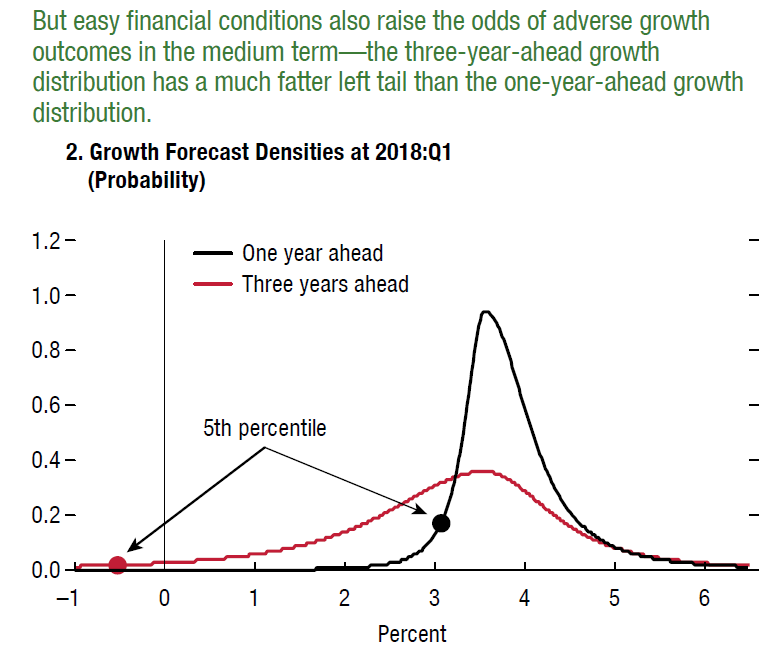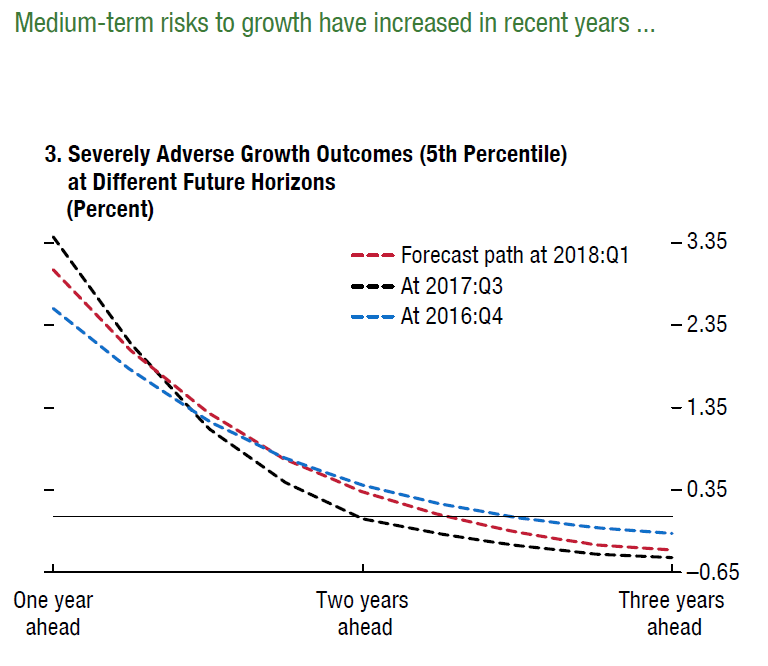growth-at-risk, aPRIL 2018
Quantitative assessment of the degree to which future GDP growth faces downside risks from financial vulnerabilities by linking financial conditions to the distribution of future GDP growth outcomes.
The GaR approach provides a framework for assessing the intertemporal trade-off between supporting growth in the near term and putting financial stability and future growth at risk over the medium term.
Global financial conditions have tightened somewhat, but remain supportive of growth.
The price of risk is low, markets are buoyant, and leverage is high across both advanced and emerging market economies.
Growth-at-Risk
Note: Panel 1 shows the Global (Financial Conditions Index) FCI. Higher values of FCIs indicate tighter conditions. The shaded area denotes ± one standard deviation changes relative to the level of Global FCI at 2017:Q3. Panel 2 shows quintiles of global and regional FCI series and components relative to their own history. Results are compared with a “Price of Risk” FCI, encompassing price-based information only (components 1–7). Easing of conditions is shown in blue and tightening in yellow. For FCI components, the shading is based on their contribution to the FCI index, e.g., a narrowing of credit spreads relative to historical norms would be contributing to the FCI easing, and hence, shown in blue. EM = emerging market; FCI = financial conditions index; GFSR = Global Financial Stability Report. Full Report
The key steps of the growth-at-risk approach
First, a model of output growth is estimated as a function of current economic and financial conditions.
Second, this model is used to forecast conditional distributions of growth for different horizons.
Finally, to gauge the impact of financial conditions on growth prospects, changes in the forecasted severely adverse growth outcomes (those that occur with a 5 percent probability, also called the “tail” of the distribution) for different horizons are compared with previous forecasts. Changes in financial conditions that result in a deterioration in severely adverse growth forecasts (that is, a leftward shift in the tail) can be interpreted as financial vulnerabilities potentially increasing toward macrocritical levels. This means that these vulnerabilities could magnify the severity of an economic downturn in the future, even without necessarily leading to a systemic financial crisis. Full Report
All photography provided by Jared Chambers








